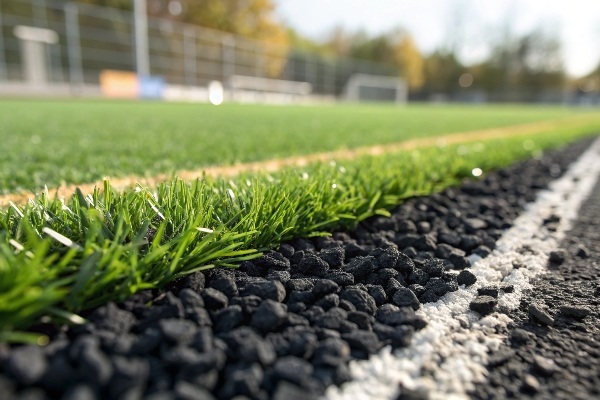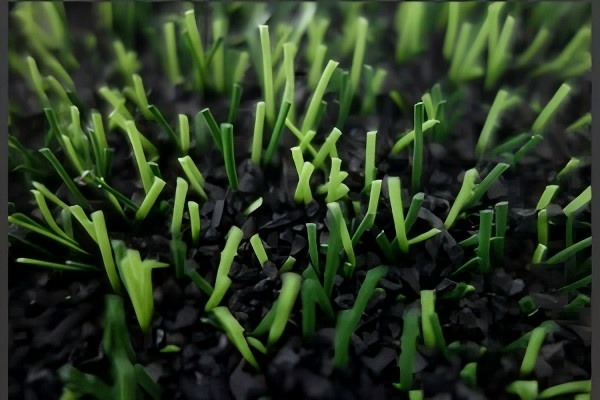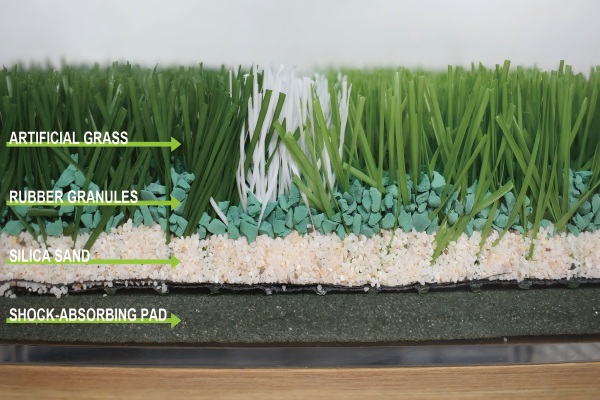Are you considering artificial turf but worried about its environmental footprint? It’s a common concern for many clients I speak with. Let’s look at the real facts together.
Artificial turf has a complex environmental impact. It saves massive amounts of water and removes the need for harmful pesticides and fertilizers. However, its production uses fossil fuels and energy, and end-of-life disposal can be a challenge. The key is understanding the full lifecycle.

Over my years in this industry, from working on the factory floor to helping clients build their businesses, this question about the environment comes up more and more. It’s not a simple “good” or “bad” answer. The technology and materials have changed a lot. To make the best choice for your projects, you need to understand the details of its production, use, and what happens to it afterward. Let’s break down the important points so you can see the full picture and make an informed decision.
What are the negatives of artificial turf?
You’ve heard the benefits, but what are the hidden problems? Before you invest in a large project, you must understand the potential downsides to avoid future headaches.
The main negatives are linked to its materials and end-of-life. It is made from plastic, which comes from fossil fuels. The manufacturing process uses energy. Also, the most common infill, crumb rubber, can lead to microplastic pollution and disposal is difficult.

When I first started in the technical department, the focus was all on durability and playability. The environmental aspect was not a major topic. Now, it’s something we have to address head-on. Let’s look deeper into these issues.
Material and Manufacturing Concerns
The yarn and backing of most artificial turf are made from plastics like polyethylene (PE) or polypropylene (PP). These are petroleum-based products. This means their creation depends on the fossil fuel industry and has a carbon footprint. The manufacturing process itself, from extruding the yarn to tufting it into the backing and applying the coating, requires a significant amount of energy. While modern factories like ours have become much more efficient, the fundamental nature of plastic production remains an environmental consideration.
Infill and Disposal Issues
This is probably the biggest challenge the industry faces.
- Infill: For years, crumb rubber from recycled tires was the standard infill. It was seen as a great way to reuse waste. However, studies have shown that tiny particles can break off and wash into waterways as microplastics.
- Disposal: An artificial turf field is a composite product. It has yarn, backing, coating, and infill. At the end of its 10-15 year lifespan, separating these materials for recycling is a complex and expensive process. Sadly, many old fields still end up in landfills.
| Aspect | Negative Impact | Why it Matters |
|---|---|---|
| Production | Uses fossil fuels and energy. | Contributes to carbon emissions and resource depletion. |
| Infill | Crumb rubber can shed microplastics. | Pollutes water and soil ecosystems. |
| Disposal | Difficult to separate materials for recycling. | Most old turf ends up in landfills. |
This is why our team is constantly working with suppliers to find better solutions for both infill and end-of-life recycling. The future of the industry depends on it.
Is there an eco-friendly artificial turf?
You’re looking for a greener option but see "eco-friendly" claims everywhere. This term can be confusing. Let’s find out what truly makes an artificial turf system sustainable.
Yes, more eco-friendly artificial turf systems exist and are becoming more popular. These systems use plant-based plastics, omit harmful materials, and are designed to be 100% recyclable. They also use natural infills like cork or sand instead of crumb rubber.

I remember a few years ago, a client from Europe asked for a turf system that was fully recyclable. At the time, it was a new request for us. That project pushed my team and me to dive deep into the world of sustainable materials. It was a turning point. We learned that "eco-friendly" is not just a marketing term; it’s about real engineering and material science.
Innovations in Yarn and Backing
The biggest change is in the materials themselves. Traditionally, turf uses different types of plastic for the yarn and backing, held together with a latex or polyurethane coating. This mix makes recycling nearly impossible. The new generation of "eco-friendly" turf is different.
- Mono-Material Design: The yarn and backing are made from the same material family, usually polyethylene (PE). With no heavy coating, the entire product can be melted down and repurposed into new products at the end of its life.
- Bio-Based Plastics: Some manufacturers are now using PE made from sugarcane. It has the same properties as traditional PE but comes from a renewable plant source, which significantly reduces the carbon footprint.
The Rise of Organic and Recyclable Infills
The conversation is shifting away from crumb rubber. The focus is now on infills that are both high-performing and environmentally safe.
| Infill Type | Source Material | Pros | Cons |
|---|---|---|---|
| Crumb Rubber | Recycled Car Tires | Excellent performance, low cost | Potential for microplastic pollution |
| Sand | Natural Silica Sand | Natural, low cost, fire-resistant | Can become hard and compact over time |
| Cork | Bark of the Cork Oak Tree | Natural, low heat absorption, light | Higher cost, can float in heavy rain |
| Coconut Fiber | Coconut Husks | Natural, holds moisture for cooling | Can break down over time |
| TPE | Thermoplastic Elastomer | Recyclable, durable, good performance | Higher cost, petroleum-based |
Choosing an eco-friendly turf with a natural infill is a big step towards a more sustainable project. It costs more initially, but it protects the environment and can be a major selling point for your clients.
Does mold grow under artificial grass?
You are worried that after a few rainy seasons, a bad smell and mold might appear under your investment. It’s a valid fear, especially in wet climates.
Mold is not a problem with the artificial grass itself, but with the installation. It can grow if water gets trapped in the base underneath. With a correctly prepared sub-base that allows for proper drainage1, mold growth2 is entirely preventable.

I once had to fix a competitor’s project where this exact problem happened. The installer laid the turf directly over the existing soil without preparing a proper base. After the first rainy season, the client called complaining of a terrible smell. The entire area was full of mold. It was a costly lesson for them, and it reinforced for me that the work you do under the turf is the most important part of the job.
Why Does Mold Grow?
Mold needs three things to grow:
- Moisture: Constant dampness is the primary cause.
- Organic Matter: Trapped leaves, dirt, and other debris provide food.
- Darkness: The space under the turf is dark, which is ideal for mold.
When a base is not built to drain water away, it creates the perfect environment. Rainwater soaks through the turf’s drainage holes but gets stuck in the soil below, creating a swampy, mold-friendly zone.
The Importance of a Proper Base
A professional installation3 guarantees this will never happen. The process creates a stable and highly permeable foundation that directs water away from the area. The quality of your base is just as important as the quality of the turf itself.
The Mold-Proof Installation Method:
- Excavation: Remove 4-6 inches of topsoil to get rid of organic material.
- Sub-Base Layer: Install a layer of crushed aggregate or stone. This creates void space for water to collect and drain away.
- Compaction: Tightly compact the stone base to create a firm and stable surface.
- Weed Barrier: A geotextile fabric is laid on top to prevent weeds and separate the base from the turf.
- Final Grade: The base should have a very slight slope (around 1%) to guide any excess water toward the edges.
This process ensures that water never sits stagnant under your turf. It flows through the turf, into the stone base, and safely drains away. With this method, mold will never be a concern.
Conclusion
Artificial turf has a complex relationship with the environment. By choosing recyclable materials and natural infills, and insisting on a professional installation with proper drainage, you ensure a a more sustainable project.
-
Understanding proper drainage techniques is crucial to prevent mold and ensure the longevity of your artificial grass. ↩
-
Explore the causes of mold growth to better understand how to prevent it and maintain your artificial grass effectively. ↩
-
Learn why professional installation is key to avoiding issues like mold and ensuring a durable, high-quality lawn. ↩
_画板-1.png)
_画板-1.png)